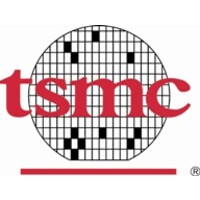Company Details
samsungsemiconductor
9,594
478,938
3344
https://semiconductor.samsung.com/
0
SAM_7706933
In-progress
Samsung Semiconductor Company CyberSecurity Posture
https://semiconductor.samsung.com/Established in 1974 as a subsidiary of Samsung Electronics, we’re proud to be recognized as one of the leading chip manufacturers in the world. Using our knowledge in semiconductor technology, our ambition is to spark the imagination of device manufacturers with top-of-the-line building blocks and, through that, enrich the lives of people around the world with transformative solutions.
Company Details
samsungsemiconductor
9,594
478,938
3344
https://semiconductor.samsung.com/
0
SAM_7706933
In-progress
Between 750 and 799
 Samsung Semiconductor Global Score (TPRM)
Samsung Semiconductor Global Score (TPRM)XXXX
Description: Samsung patched **CVE-2025-21043**, a **critical remote code execution (RCE) vulnerability** in **libimagecodec.quram.so**, a closed-source image parsing library by Quramsoft. The flaw, an **out-of-bounds write weakness**, allowed attackers to inject malicious code via **specially crafted image files**, compromising devices **without user interaction** (zero-click). Exploited in live attacks since August 2025, it posed a severe risk to **Android 13–16 devices**, including those using WhatsApp and other messaging apps.The vulnerability granted attackers **direct access to user data**, potentially enabling **data theft, surveillance, or further system compromise**. While Samsung’s September 2025 Security Maintenance Release addressed the issue, delayed patching left users exposed to **active exploitation**. Security experts emphasized the urgency of updates, warning that unpatched devices remained vulnerable to **highly targeted campaigns**, similar to a prior WhatsApp zero-click flaw (CVE-2025-55177) chained with an Apple zero-day.The incident underscores the **criticality of third-party library risks** and the need for **proactive patch management** to mitigate large-scale breaches. Failure to update could result in **widespread data exposure**, financial fraud, or further supply-chain attacks leveraging the same library.


Samsung Semiconductor has 61.29% more incidents than the average of same-industry companies with at least one recorded incident.
Samsung Semiconductor has 56.25% more incidents than the average of all companies with at least one recorded incident.
Samsung Semiconductor reported 1 incidents this year: 0 cyber attacks, 0 ransomware, 1 vulnerabilities, 0 data breaches, compared to industry peers with at least 1 incident.
Samsung Semiconductor cyber incidents detection timeline including parent company and subsidiaries

Established in 1974 as a subsidiary of Samsung Electronics, we’re proud to be recognized as one of the leading chip manufacturers in the world. Using our knowledge in semiconductor technology, our ambition is to spark the imagination of device manufacturers with top-of-the-line building blocks and, through that, enrich the lives of people around the world with transformative solutions.


ST is a global semiconductor leader delivering intelligent and energy-efficient products and solutions that power the electronics at the heart of everyday life. ST’s products are found everywhere today, and together with our customers, we are enabling smarter driving and smarter factories, cities an

Qimonda AG (NYSE: QI) is a leading global memory supplier with a broad diversified DRAM product portfolio. The company generated net sales of Euro 3.61 billion in financial year 2007 and had approximately 13,500 employees worldwide. Qimonda has access to four 300mm manufacturing sites on three conti
Applied Materials is the leader in materials engineering solutions used to produce virtually every new chip and advanced display in the world. Our expertise in modifying materials at atomic levels enables customers to transform possibilities into reality. These materials engineering solutions are th

We care deeply about transforming lives with AMD technology to enrich our industry, our communities, and the world. Our mission is to build great products that accelerate next-generation computing experiences – the building blocks for the data center, artificial intelligence, PCs, gaming and embedde
We are a global semiconductor company that designs, manufactures and sells analog and embedded processing chips for markets such as industrial, automotive, personal electronics, enterprise systems and communications equipment. At our core, we have a passion to create a better world by making electro
We anticipate tomorrow’s needs—navigating a changing world by bringing together technology's brightest minds to build game-changing solutions that propel us forward. NXP Semiconductors N.V. (NASDAQ: NXPI) is the trusted partner for innovative solutions in the automotive, industrial & IoT, mobile, an

Established in 1987, TSMC is the world's first dedicated semiconductor foundry. As the founder and a leader of the Dedicated IC Foundry segment, TSMC has built its reputation by offering advanced and "More-than-Moore" wafer production processes and unparalleled manufacturing efficiency. From its in
onsemi (Nasdaq: ON) is driving disruptive innovations to help build a better future. With a focus on automotive and industrial end-markets, the company is accelerating change in megatrends such as vehicle electrification and safety, sustainable energy grids, industrial automation, and 5G and cloud i

Who are we? ASML is an innovation leader in the global semiconductor industry. We make machines that chipmakers use to mass produce microchips. Founded in 1984 in the Netherlands with just a handful of employees, we’ve now grown to over 40,000 employees, 143 nationalities and more than 60 locations
.png)
Samsung achieves CSMS ML3 certification, strengthening security across automotive UFS and SSD products and leading cybersecurity innovation.
Innovations in mobile devices, home entertainment, appliances, and semiconductors win multiple CES® 2026 Innovation Awards.
Samsung Electronics saw a decline in stock value amid a 3.7% drop in South Korea's Kospi index, alongside significant decreases in other...
Tech News News: Samsung Electronics chairman Lee Jay-young lightheartedly questioned the prevalence of iPhones at a tech event,...
Samsung has patched a serious security vulnerability that hackers were already using in live attacks against its Android devices.
Samsung has released its September 2025 security update, addressing a critical zero-day vulnerability that is being actively exploited in...
The new robot vacuum cleaner and Bespoke AI Refrigerators achieved the highest 'Standard' grade in KISA's Certification of IoT Cybersecurity...
Samsung can now test its devices to verify if they meet the European Union's Radio Equipment Directive (RED) requirements.
Team Atlanta quickly identified complex and diverse security vulnerabilities in the final and demonstrated technology to generate accurate...

Explore insights on cybersecurity incidents, risk posture, and Rankiteo's assessments.
The official website of Samsung Semiconductor is https://semiconductor.samsung.com/.
According to Rankiteo, Samsung Semiconductor’s AI-generated cybersecurity score is 781, reflecting their Fair security posture.
According to Rankiteo, Samsung Semiconductor currently holds 0 security badges, indicating that no recognized compliance certifications are currently verified for the organization.
According to Rankiteo, Samsung Semiconductor is not certified under SOC 2 Type 1.
According to Rankiteo, Samsung Semiconductor does not hold a SOC 2 Type 2 certification.
According to Rankiteo, Samsung Semiconductor is not listed as GDPR compliant.
According to Rankiteo, Samsung Semiconductor does not currently maintain PCI DSS compliance.
According to Rankiteo, Samsung Semiconductor is not compliant with HIPAA regulations.
According to Rankiteo,Samsung Semiconductor is not certified under ISO 27001, indicating the absence of a formally recognized information security management framework.
Samsung Semiconductor operates primarily in the Semiconductor Manufacturing industry.
Samsung Semiconductor employs approximately 9,594 people worldwide.
Samsung Semiconductor presently has no subsidiaries across any sectors.
Samsung Semiconductor’s official LinkedIn profile has approximately 478,938 followers.
Samsung Semiconductor is classified under the NAICS code 3344, which corresponds to Semiconductor and Other Electronic Component Manufacturing.
No, Samsung Semiconductor does not have a profile on Crunchbase.
Yes, Samsung Semiconductor maintains an official LinkedIn profile, which is actively utilized for branding and talent engagement, which can be accessed here: https://www.linkedin.com/company/samsungsemiconductor.
As of November 27, 2025, Rankiteo reports that Samsung Semiconductor has experienced 1 cybersecurity incidents.
Samsung Semiconductor has an estimated 1,246 peer or competitor companies worldwide.
Incident Types: The types of cybersecurity incidents that have occurred include Vulnerability.
Detection and Response: The company detects and responds to cybersecurity incidents through an third party assistance with meta security teams, third party assistance with whatsapp security teams, and containment measures with september 2025 security maintenance release (patch), and remediation measures with patch for cve-2025-21043, remediation measures with additional patches from google and samsung semiconductor, and communication strategy with public advisory for users to update devices, communication strategy with expert recommendations (e.g., black duck)..
Title: Samsung Patches Critical Remote Code Execution Vulnerability (CVE-2025-21043) in Android Devices
Description: Samsung has patched a serious security vulnerability (CVE-2025-21043) in its Android devices, which was actively exploited by hackers. The flaw, an out-of-bounds write weakness in the closed-source image parsing library 'libimagecodec.quram.so' (developed by Quramsoft), allowed attackers to execute remote code by sending malicious image files. Users could be compromised without interaction. The issue was reported in August 2025 by Meta and WhatsApp security teams and addressed in Samsung's September 2025 Security Maintenance Release. The update also includes patches for other high/critical flaws affecting Android 13–16 devices.
Date Detected: 2025-08
Date Publicly Disclosed: 2025-09
Date Resolved: 2025-09
Type: Vulnerability Exploitation
Attack Vector: Malicious Image FilesClosed-Source Library Exploitation (libimagecodec.quram.so)
Vulnerability Exploited: CVE-2025-21043 (Out-of-Bounds Write in libimagecodec.quram.so)
Common Attack Types: The most common types of attacks the company has faced is Vulnerability.
Identification of Attack Vectors: The company identifies the attack vectors used in incidents through Malicious Image Files via Messaging Apps (e.g. and WhatsApp).

Data Compromised: Potential user data (via rce)
Systems Affected: Samsung Android Devices (Android 13–16)
Brand Reputation Impact: Potential Reputation Risk Due to Critical Vulnerability
Identity Theft Risk: ['High (if RCE led to data exfiltration)']

Entity Name: Samsung Electronics
Entity Type: Corporation
Industry: Technology (Consumer Electronics)
Location: Suwon, South Korea
Size: Large (Global)
Customers Affected: Samsung Android Users (Android 13–16)

Entity Name: WhatsApp (Meta)
Entity Type: Subsidiary
Industry: Technology (Messaging)
Location: Menlo Park, California, USA
Size: Large (Global)
Customers Affected: Potential WhatsApp Users on Samsung Devices

Entity Name: Quramsoft
Entity Type: Software Vendor
Industry: Software Development
Location: Yongin, South Korea

Incident Response Plan Activated: True
Third Party Assistance: Meta Security Teams, Whatsapp Security Teams.
Containment Measures: September 2025 Security Maintenance Release (Patch)
Remediation Measures: Patch for CVE-2025-21043Additional Patches from Google and Samsung Semiconductor
Communication Strategy: Public Advisory for Users to Update DevicesExpert Recommendations (e.g., Black Duck)
Third-Party Assistance: The company involves third-party assistance in incident response through Meta Security Teams, WhatsApp Security Teams, .
Prevention of Data Exfiltration: The company takes the following measures to prevent data exfiltration: Patch for CVE-2025-21043, Additional Patches from Google and Samsung Semiconductor, .
Handling of PII Incidents: The company handles incidents involving personally identifiable information (PII) through by september 2025 security maintenance release (patch) and .

Lessons Learned: Critical vulnerabilities in closed-source libraries can have wide-ranging impacts across multiple apps/devices., Zero-click exploits underscore the need for proactive patching even without user interaction., Collaboration between vendors (Samsung, Meta/WhatsApp) is essential for rapid mitigation.

Recommendations: Users should immediately install the September 2025 security update., Organizations should prioritize patch management for third-party libraries., Monitor for unusual activity in messaging apps (e.g., WhatsApp) as potential attack vectors., Adopt security hygiene practices like enabling automatic updates.Users should immediately install the September 2025 security update., Organizations should prioritize patch management for third-party libraries., Monitor for unusual activity in messaging apps (e.g., WhatsApp) as potential attack vectors., Adopt security hygiene practices like enabling automatic updates.Users should immediately install the September 2025 security update., Organizations should prioritize patch management for third-party libraries., Monitor for unusual activity in messaging apps (e.g., WhatsApp) as potential attack vectors., Adopt security hygiene practices like enabling automatic updates.Users should immediately install the September 2025 security update., Organizations should prioritize patch management for third-party libraries., Monitor for unusual activity in messaging apps (e.g., WhatsApp) as potential attack vectors., Adopt security hygiene practices like enabling automatic updates.
Key Lessons Learned: The key lessons learned from past incidents are Critical vulnerabilities in closed-source libraries can have wide-ranging impacts across multiple apps/devices.,Zero-click exploits underscore the need for proactive patching even without user interaction.,Collaboration between vendors (Samsung, Meta/WhatsApp) is essential for rapid mitigation.

Source: Samsung Security Advisory (September 2025)

Source: Meta/WhatsApp Security Bulletin (August 2025)

Source: Black Duck (Nivedita Murthy, Senior Staff Consultant)
Additional Resources: Stakeholders can find additional resources on cybersecurity best practices at and Source: Samsung Security Advisory (September 2025), and Source: Meta/WhatsApp Security Bulletin (August 2025), and Source: Black Duck (Nivedita Murthy, Senior Staff Consultant).

Investigation Status: Resolved (Patched)
Communication of Investigation Status: The company communicates the status of incident investigations to stakeholders through Public Advisory For Users To Update Devices, Expert Recommendations (E.G. and Black Duck).

Stakeholder Advisories: Public Patch Release, Expert Commentary (E.G., Black Duck).
Customer Advisories: Urgent update notification for Samsung Android users
Advisories Provided: The company provides the following advisories to stakeholders and customers following an incident: were Public Patch Release, Expert Commentary (E.G., Black Duck), Urgent Update Notification For Samsung Android Users and .

Entry Point: Malicious Image Files Via Messaging Apps (E.G., Whatsapp),

Root Causes: Out-Of-Bounds Write Vulnerability In Quramsoft'S Libimagecodec.Quram.So Library., Lack Of Input Validation For Image File Parsing., Delayed Patching Timeline (Reported In August, Patched In September).,
Corrective Actions: Released September 2025 Security Maintenance Release With Cve-2025-21043 Patch., Collaborated With Meta/Whatsapp For Vulnerability Disclosure., Included Additional Patches For Related Flaws In Android 13–16.,
Post-Incident Analysis Process: The company's process for conducting post-incident analysis is described as Meta Security Teams, Whatsapp Security Teams, .
Corrective Actions Taken: The company has taken the following corrective actions based on post-incident analysis: Released September 2025 Security Maintenance Release With Cve-2025-21043 Patch., Collaborated With Meta/Whatsapp For Vulnerability Disclosure., Included Additional Patches For Related Flaws In Android 13–16., .
Most Recent Incident Detected: The most recent incident detected was on 2025-08.
Most Recent Incident Publicly Disclosed: The most recent incident publicly disclosed was on 2025-09.
Most Recent Incident Resolved: The most recent incident resolved was on 2025-09.
Most Significant Data Compromised: The most significant data compromised in an incident were Potential User Data (via RCE) and .
Most Significant System Affected: The most significant system affected in an incident was Samsung Android Devices (Android 13–16).
Third-Party Assistance in Most Recent Incident: The third-party assistance involved in the most recent incident was meta security teams, whatsapp security teams, .
Containment Measures in Most Recent Incident: The containment measures taken in the most recent incident was September 2025 Security Maintenance Release (Patch).
Most Sensitive Data Compromised: The most sensitive data compromised in a breach was Potential User Data (via RCE).
Most Significant Lesson Learned: The most significant lesson learned from past incidents was Collaboration between vendors (Samsung, Meta/WhatsApp) is essential for rapid mitigation.
Most Significant Recommendation Implemented: The most significant recommendation implemented to improve cybersecurity was Organizations should prioritize patch management for third-party libraries., Monitor for unusual activity in messaging apps (e.g., WhatsApp) as potential attack vectors., Users should immediately install the September 2025 security update. and Adopt security hygiene practices like enabling automatic updates..
Most Recent Source: The most recent source of information about an incident are Black Duck (Nivedita Murthy, Senior Staff Consultant), Meta/WhatsApp Security Bulletin (August 2025) and Samsung Security Advisory (September 2025).
Current Status of Most Recent Investigation: The current status of the most recent investigation is Resolved (Patched).
Most Recent Stakeholder Advisory: The most recent stakeholder advisory issued was Public patch release, Expert commentary (e.g., Black Duck), .
Most Recent Customer Advisory: The most recent customer advisory issued was an Urgent update notification for Samsung Android users.
.png)
Angular is a development platform for building mobile and desktop web applications using TypeScript/JavaScript and other languages. Prior to versions 19.2.16, 20.3.14, and 21.0.1, there is a XSRF token leakage via protocol-relative URLs in angular HTTP clients. The vulnerability is a Credential Leak by App Logic that leads to the unauthorized disclosure of the Cross-Site Request Forgery (XSRF) token to an attacker-controlled domain. Angular's HttpClient has a built-in XSRF protection mechanism that works by checking if a request URL starts with a protocol (http:// or https://) to determine if it is cross-origin. If the URL starts with protocol-relative URL (//), it is incorrectly treated as a same-origin request, and the XSRF token is automatically added to the X-XSRF-TOKEN header. This issue has been patched in versions 19.2.16, 20.3.14, and 21.0.1. A workaround for this issue involves avoiding using protocol-relative URLs (URLs starting with //) in HttpClient requests. All backend communication URLs should be hardcoded as relative paths (starting with a single /) or fully qualified, trusted absolute URLs.
Forge (also called `node-forge`) is a native implementation of Transport Layer Security in JavaScript. An Uncontrolled Recursion vulnerability in node-forge versions 1.3.1 and below enables remote, unauthenticated attackers to craft deep ASN.1 structures that trigger unbounded recursive parsing. This leads to a Denial-of-Service (DoS) via stack exhaustion when parsing untrusted DER inputs. This issue has been patched in version 1.3.2.
Forge (also called `node-forge`) is a native implementation of Transport Layer Security in JavaScript. An Integer Overflow vulnerability in node-forge versions 1.3.1 and below enables remote, unauthenticated attackers to craft ASN.1 structures containing OIDs with oversized arcs. These arcs may be decoded as smaller, trusted OIDs due to 32-bit bitwise truncation, enabling the bypass of downstream OID-based security decisions. This issue has been patched in version 1.3.2.
Suricata is a network IDS, IPS and NSM engine developed by the OISF (Open Information Security Foundation) and the Suricata community. Prior to versions 7.0.13 and 8.0.2, working with large buffers in Lua scripts can lead to a stack overflow. Users of Lua rules and output scripts may be affected when working with large buffers. This includes a rule passing a large buffer to a Lua script. This issue has been patched in versions 7.0.13 and 8.0.2. A workaround for this issue involves disabling Lua rules and output scripts, or making sure limits, such as stream.depth.reassembly and HTTP response body limits (response-body-limit), are set to less than half the stack size.
Suricata is a network IDS, IPS and NSM engine developed by the OISF (Open Information Security Foundation) and the Suricata community. In versions from 8.0.0 to before 8.0.2, a NULL dereference can occur when the entropy keyword is used in conjunction with base64_data. This issue has been patched in version 8.0.2. A workaround involves disabling rules that use entropy in conjunction with base64_data.

Get company history
















Every week, Rankiteo analyzes billions of signals to give organizations a sharper, faster view of emerging risks. With deeper, more actionable intelligence at their fingertips, security teams can outpace threat actors, respond instantly to Zero-Day attacks, and dramatically shrink their risk exposure window.
Identify exposed access points, detect misconfigured SSL certificates, and uncover vulnerabilities across the network infrastructure.
Gain visibility into the software components used within an organization to detect vulnerabilities, manage risk, and ensure supply chain security.
Monitor and manage all IT assets and their configurations to ensure accurate, real-time visibility across the company's technology environment.
Leverage real-time insights on active threats, malware campaigns, and emerging vulnerabilities to proactively defend against evolving cyberattacks.




